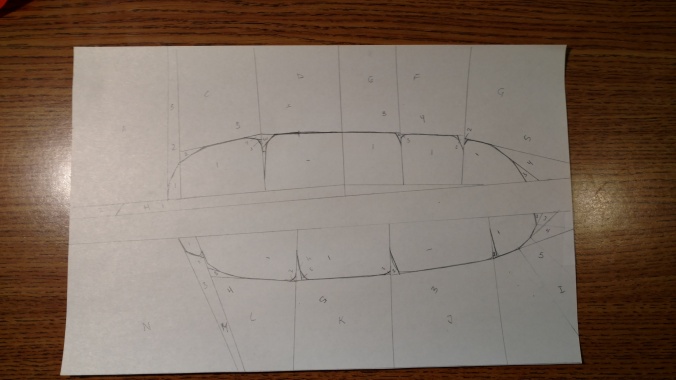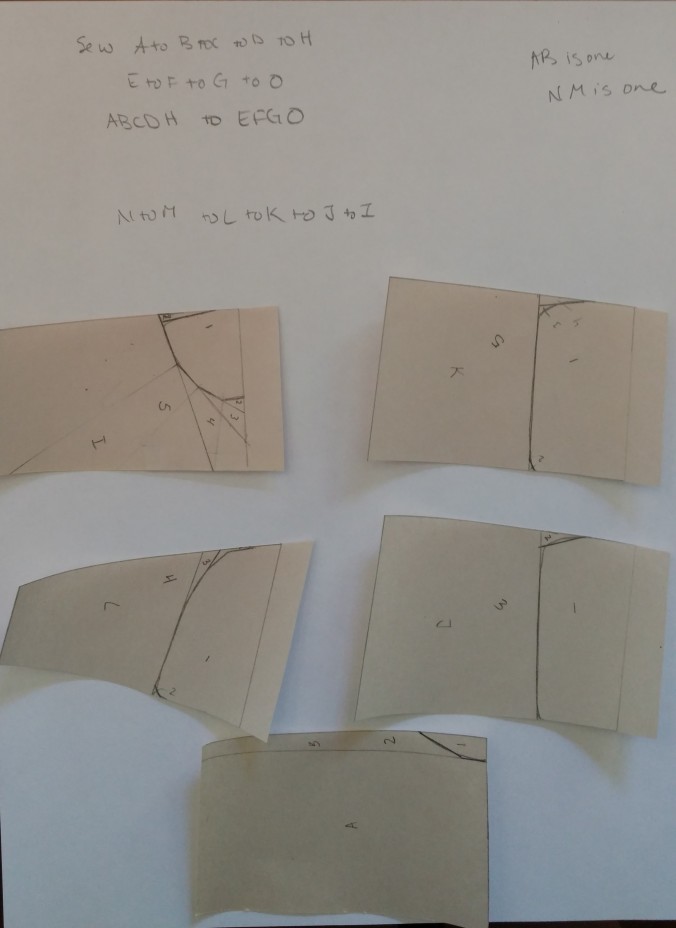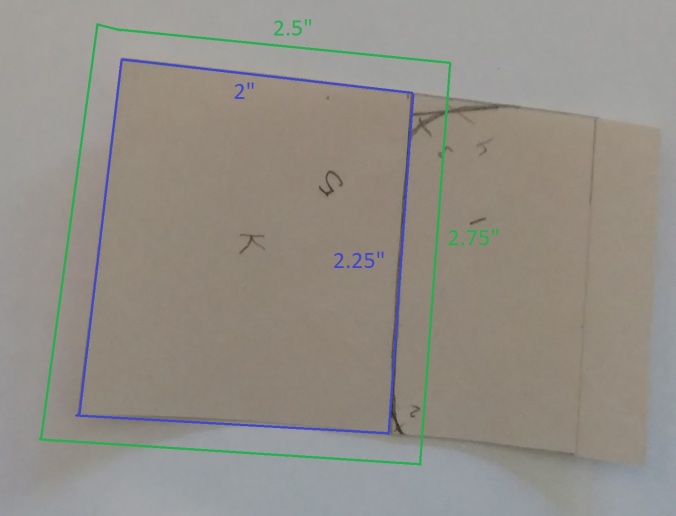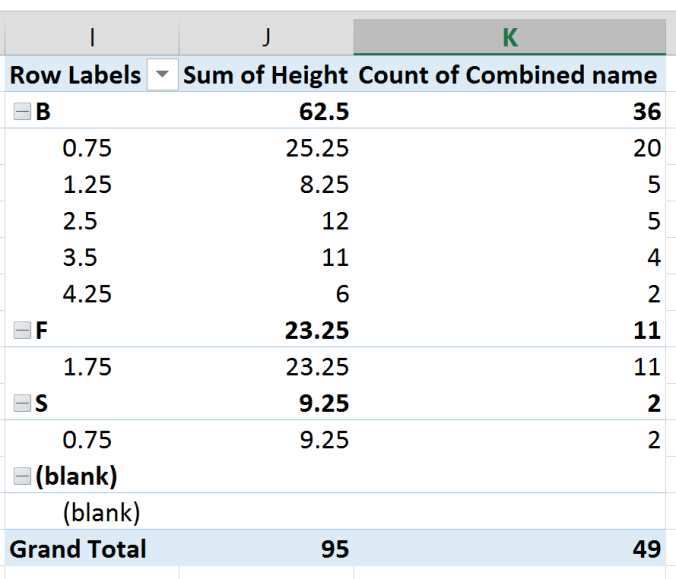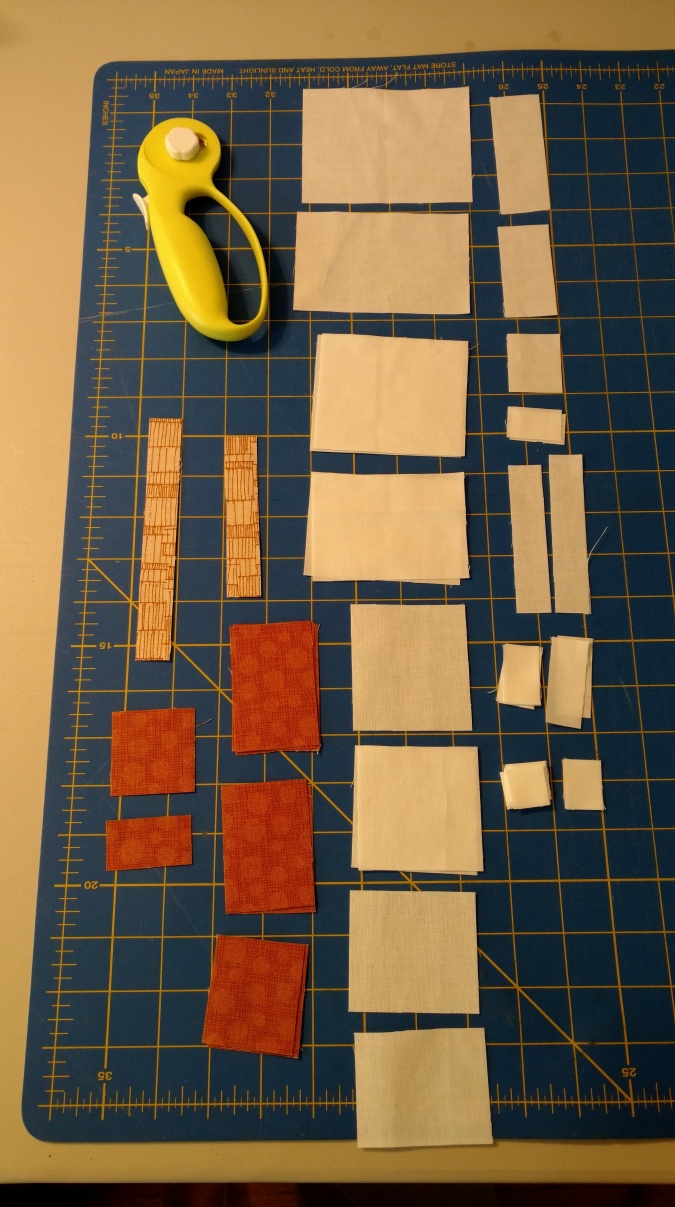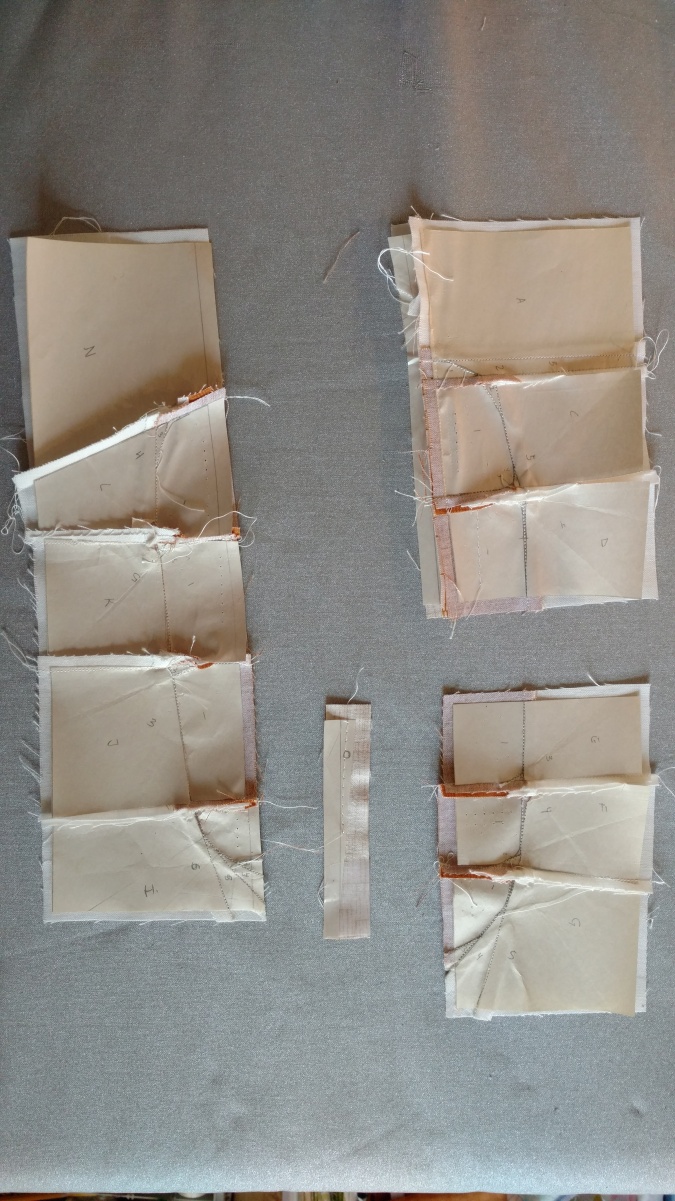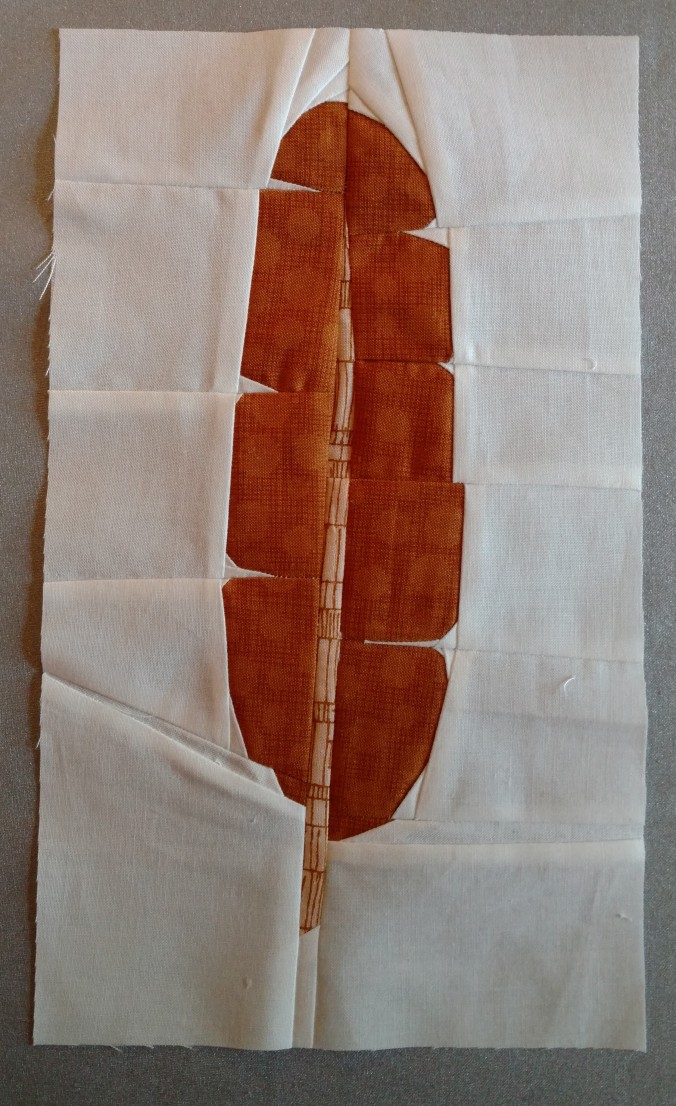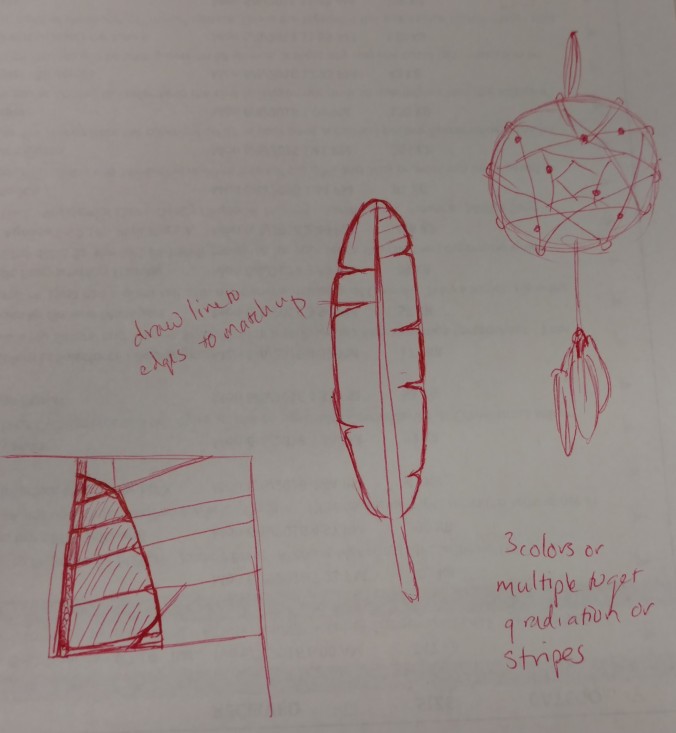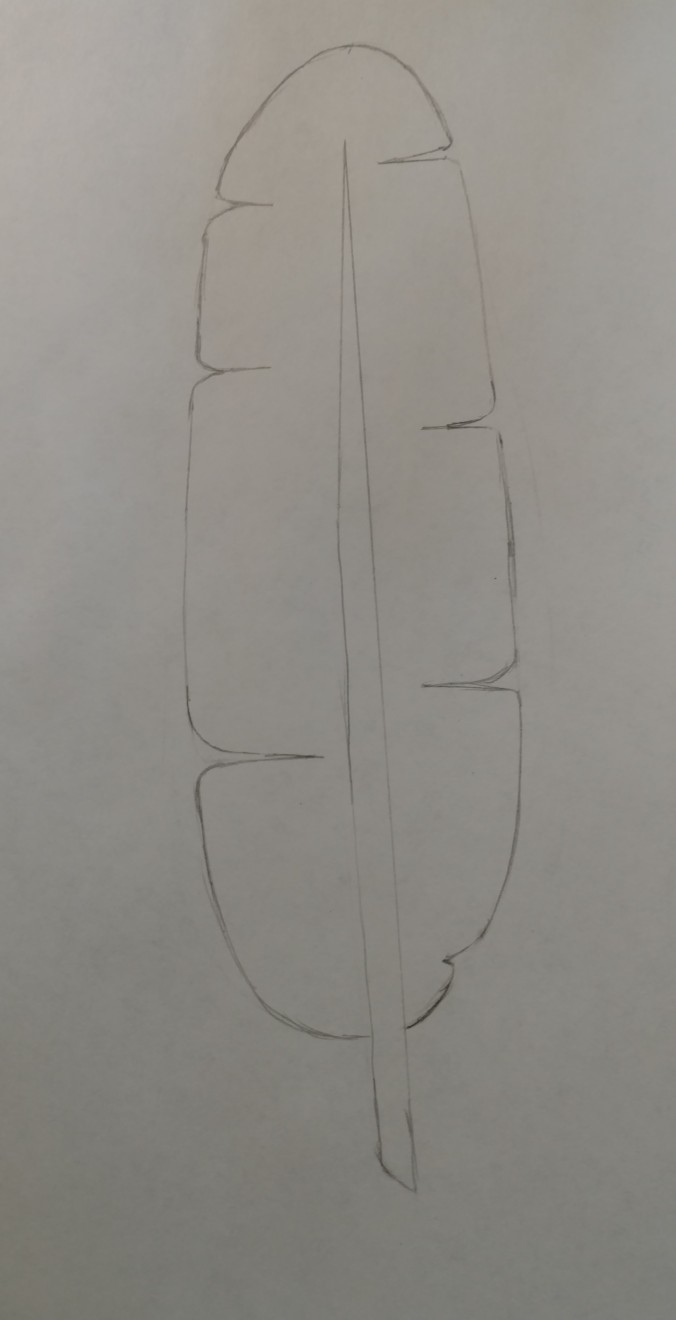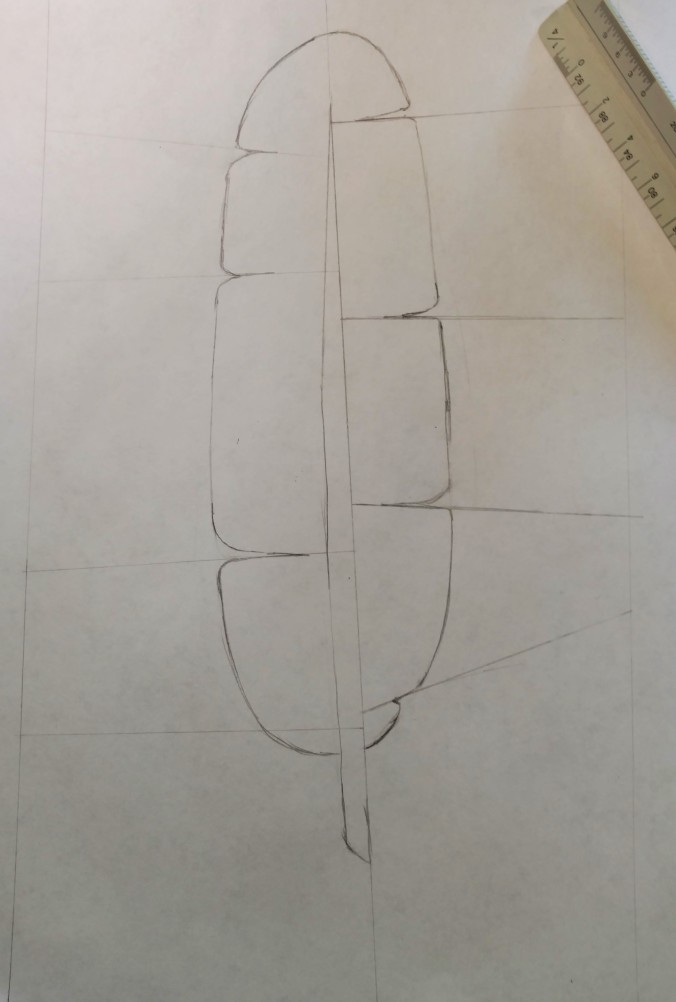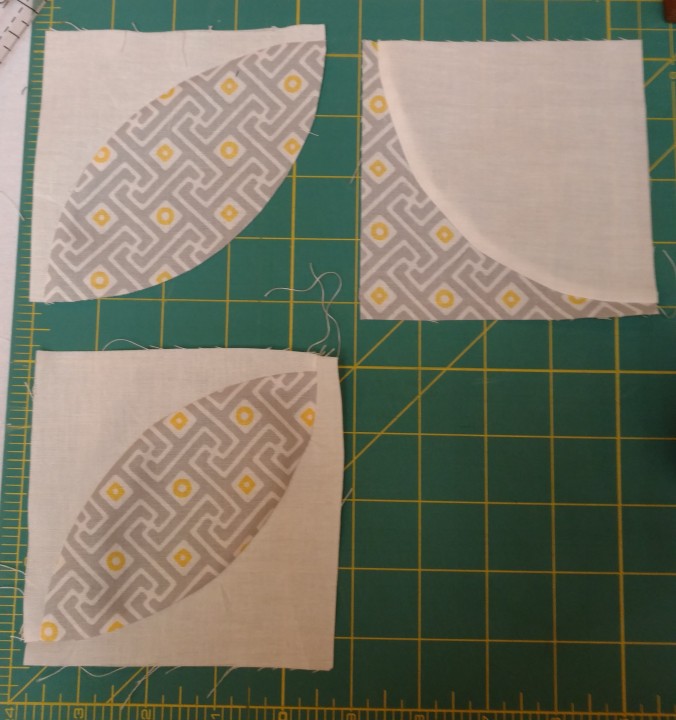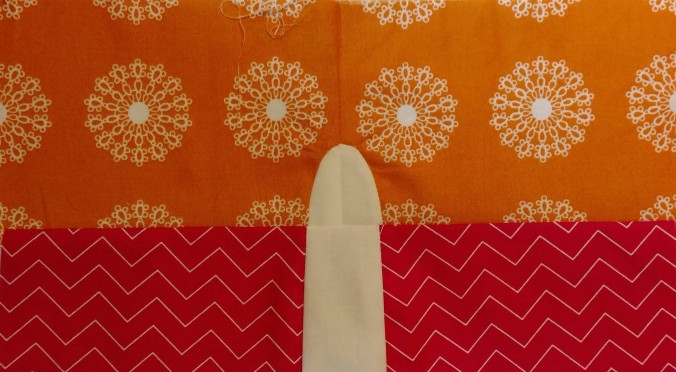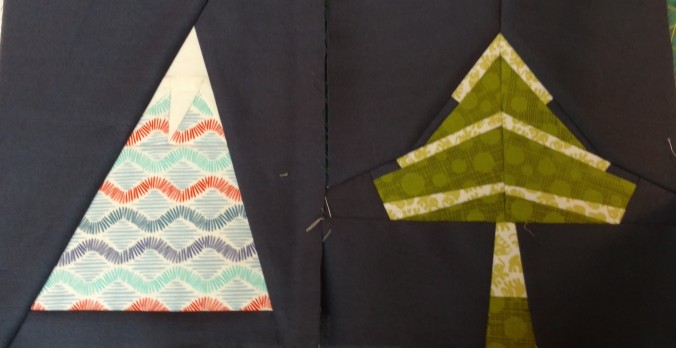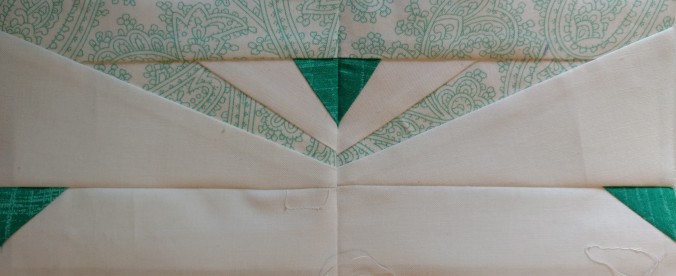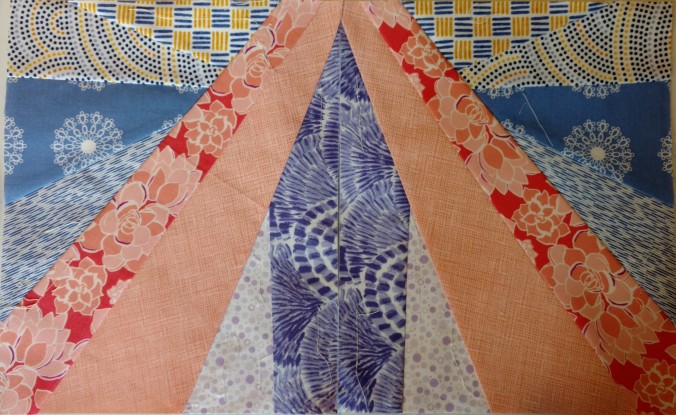I enjoy traveling and a personal goal is to travel to a new country every year. I like trying out new food, getting away, and experiencing a sliver of life in another country. I some cases I also end up shopping for fabric. One of my favorite memories is shopping for saris in India on a trip in 2007. I was in Chennai with some of my sorority sisters for a wedding. The sari shop was a multi-floor store with floor to ceiling shelves around the entire room. A counter ran all the way around the store. We sat at the counter and pointed at different saris we wanted to see. It was amazing because the color combinations and woven patterns on every sari were different. The shop attendant would (magically) grab two corners of the folded sari, pull and snap the sari open. It would then drift down to the counter for us to admire the detail. I walked away with a beautiful orange and green sari that I wore to the wedding and have worn since we got back.
More recently, my younger sister had been living in Kenya doing work in Water and Sanitation. She got into quilting earlier than I did and helped me in the beginning. One of the things she discovered in her work and travel in Africa is the kitenge fabric. It is popular in East Africa and is created using the batik technique. They have patterns that range in size from small and dense to large and graphic. Similar to the saris in India, every kitenge that I’ve seen uses different colors and patterns. I was lucky that my sister started collecting this especially on her trips to Nigeria where the selection seemed to be more diverse. I was quite happy when I got a box FULL of kitenge fabric for my birthday. I also received kitenge for Christmas and when we made it out to see her in Kenya last July. I have at least 20 different kinds of fabric ranging from 2 to 6 yards. It is enough to last a lifetime. I’ve included below a small selection of the fabric.

Zebra kitenge that I bought in Kenya
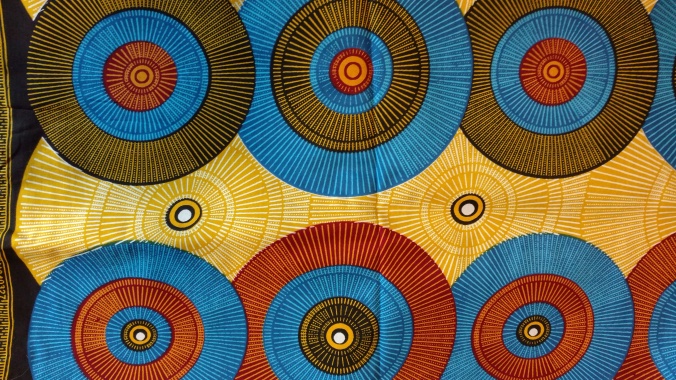
Bold, big pattern kitenge
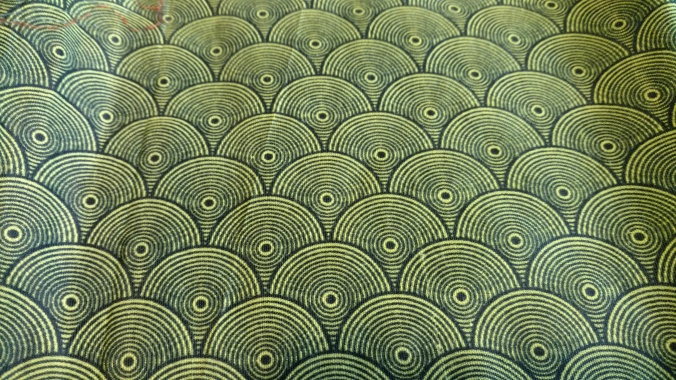
Smaller, two color pattern (each circle is 1.5″ across)
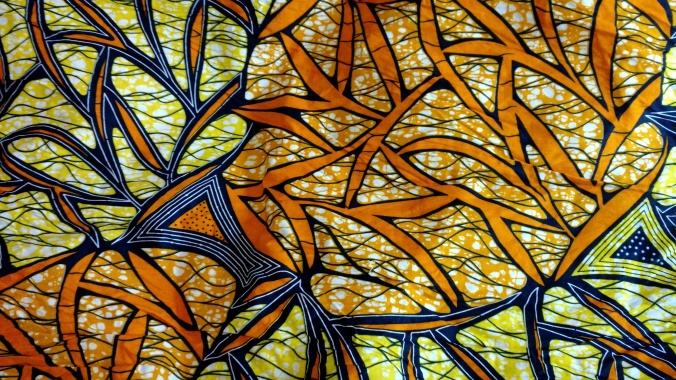
Orange, navy and yellow kitenge (I enjoy the mix of geometric and organic elements)
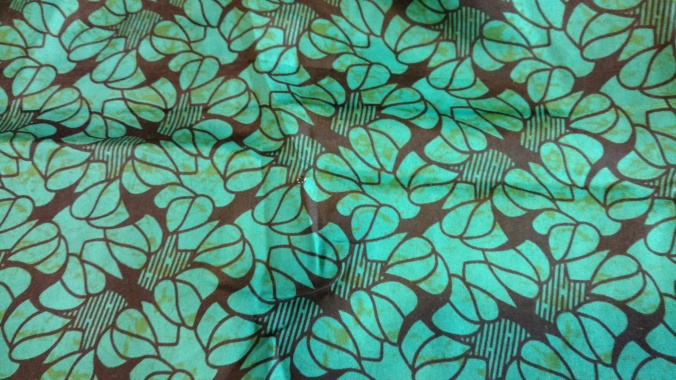
Bigger pattern in teal and navy
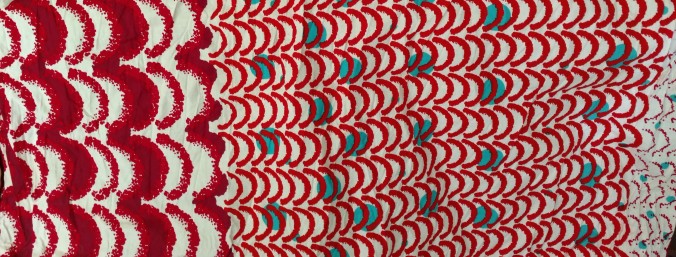
One of my favorite patterns (with gold flecks that don’t show up here)
So, the challenge becomes what to do with this fabric, especially because of the big patterns. Most of the quilts I design or create have smaller pieces and I worried that it would lose the impact of the pattern. I decided to design an applique pattern with ladies to show off the patterns and put them into a snowball block. I’ve created a sample lady with other fabric. Here is the first one.
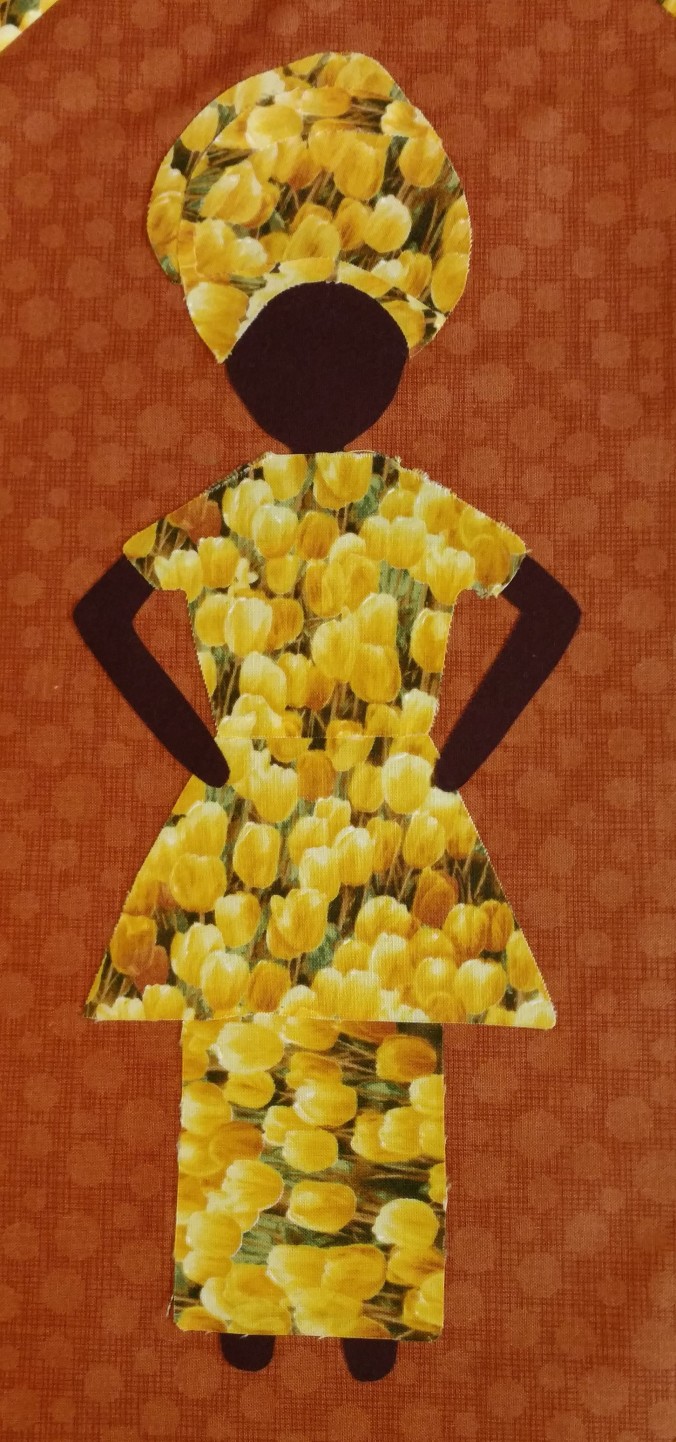
I’ve now created 18 other ladies using the kitenge fabric. I’m working on cutting out the background fabric and all the strips for the snowball blocks surrounding the ladies. I’ll show pictures as I make more progress.
